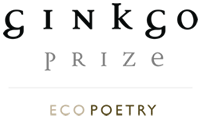The vivid display
of high-keyed colour suggests an acidic immediacy that contrasts playfully with the Lesser-Spotted Woodpecker’s deep connection to more elemental scapes such as ancient glades and old cider orchards, whose subtle and diverse varieties of dead wood recreated here offer the ideal context.
Muted tones and lost histories
are interwoven in the vision of the Grey Partridge, who likes to ask how a future ruralism might present itself, attracted as she is to pastoral tropes such as the swing of a rusty gate or open ploughed ground, which she seeks to express by colours dull and delicate, sudden deft twists.
What begins as a dialogue between
folk tale and woodcut becomes the haunting starting point for the Barn Owl but one from which he may deviate, for in some cultures the owl is considered a fool, an idea perceived here as something to both honour and subvert.
Typically grounded in the process
of collating variations of local visual phenomena – the more surprising the combination the better – the Magpie gathers objects that, while accruing unstable symbolisms, act as physical footnotes to an entire era.
A quiet spirit at work
the Wood Warbler aims to frustrate the process of recognition by treading a path almost lost among wet leaves and dead bracken, between the borders of figuration and abstraction.
We see in his body
of work materials as diverse as charcoal, plastic and greaseproof paper, which the Herring Gull uses to employ a sense of provisionality as he explores how the built environment is both source and trap alongside which the liminal offers a deep ambiguous charge that could be described as a sort of despairing triumphalism.
Tracing her beginnings in classical still life
the Mute Swan emerges from myths of decadence and mortality set against a background overpainted with lakes and rivers, where she presents a facade at once closed but pervious to a kind of fixed interiority.
What is being proposed
by the Song Thrush is a way of imagining how the concrete might be released into a more fluid understanding of time and space.
Appearing here as
a form of semi-erased expression, the Skylark represents himself as lone symbol that manages to exalt the idea of how a national identity might exist more fully in art than in a vanishing reality.
Insisting that violence too
must be accommodated the Cuckoo operates between acts of damage and reparation and while keen to explore notions of parasitic exploitation she nonetheless celebrates opportunity and daring together with a certain brash self- preservation, where any nagging doubts about the means of creating are always overcome by the promise of something new.
As part of her ongoing interest in participatory art
the Nightingale asks that we take ourselves to the edge of a wood and listen and in the unlikely event that we will hear anything may we nonetheless make ourselves open to the possibility that something might be heard thereby allowing ourselves to become the artwork in the way we stand there in the dark listening for what is no longer there.
Greta Stoddart’s 3 poetry books have won or been shortlisted for prizes such as the Geoffrey Faber, Forward, Roehampton and Costa Book Awards. Her latest work, a radio poem Who’s there?, was BBC Pick of the Week and shortlisted for the Ted Hughes Award in 2017. Her new book will be published by Bloodaxe in 2022.

